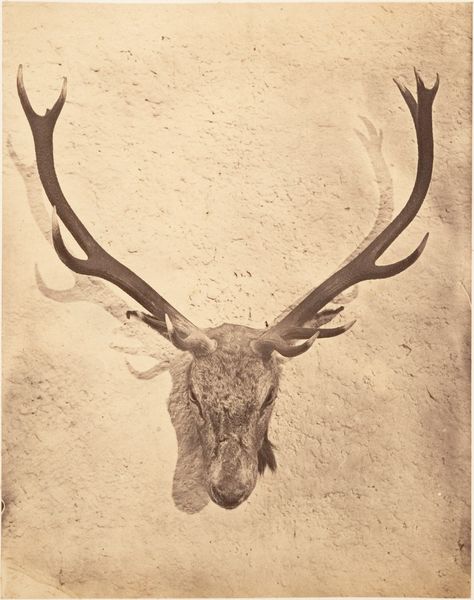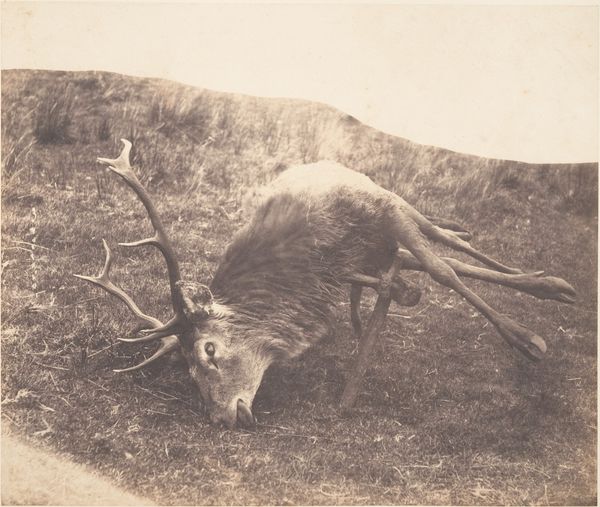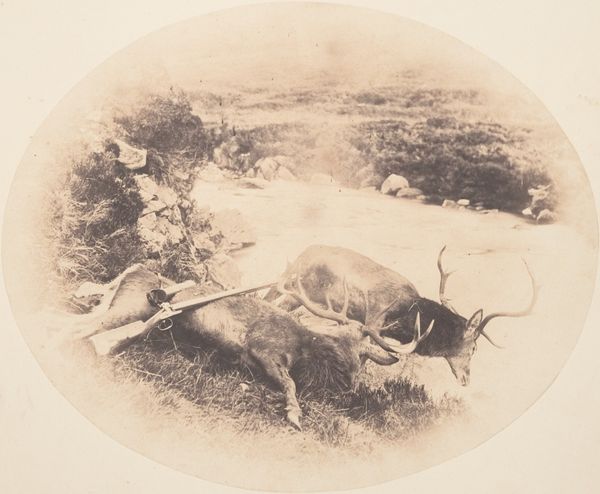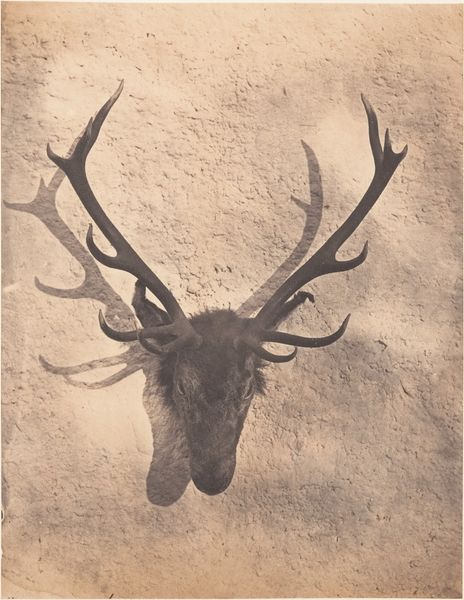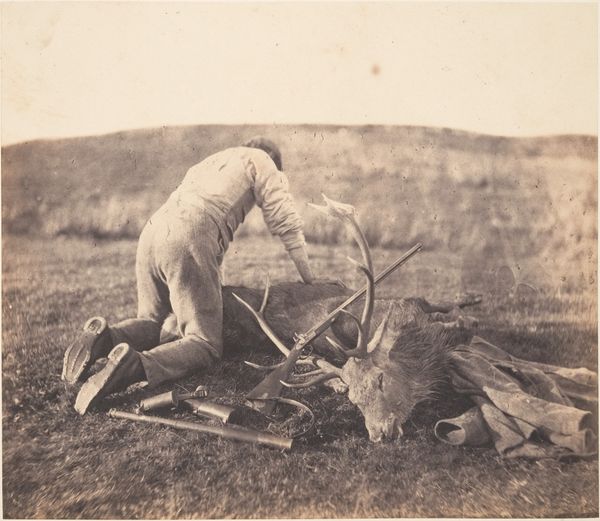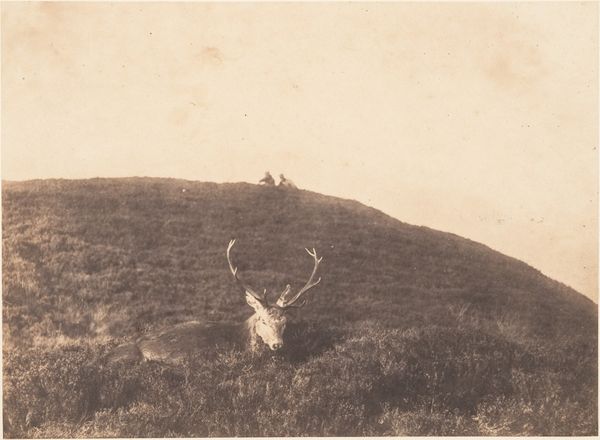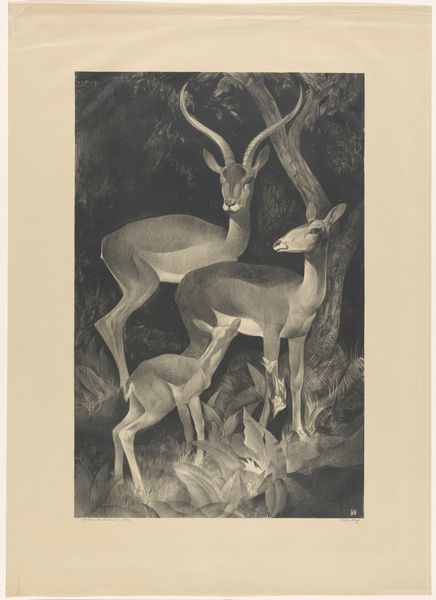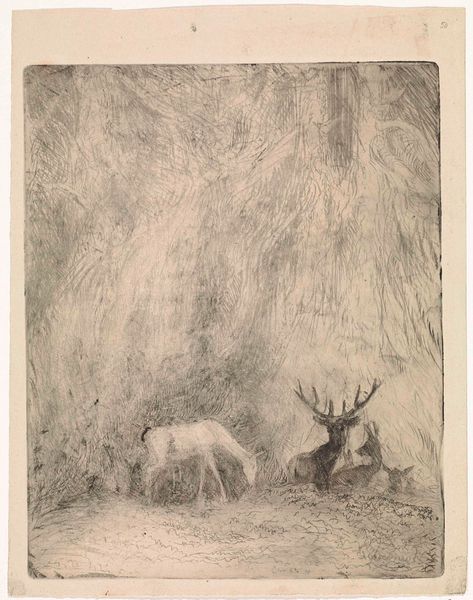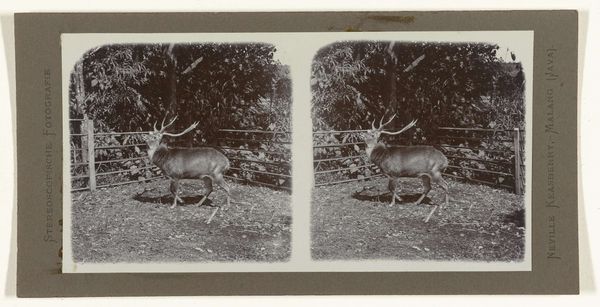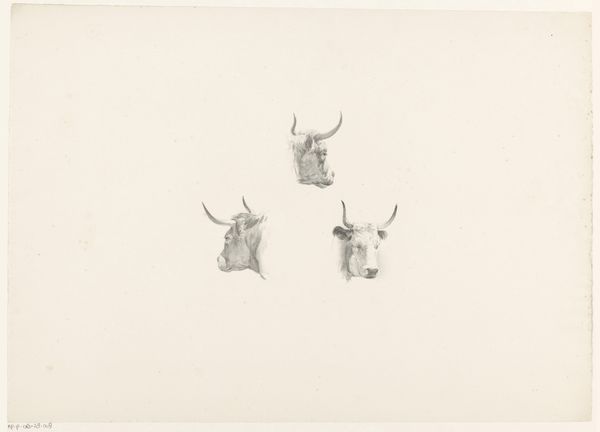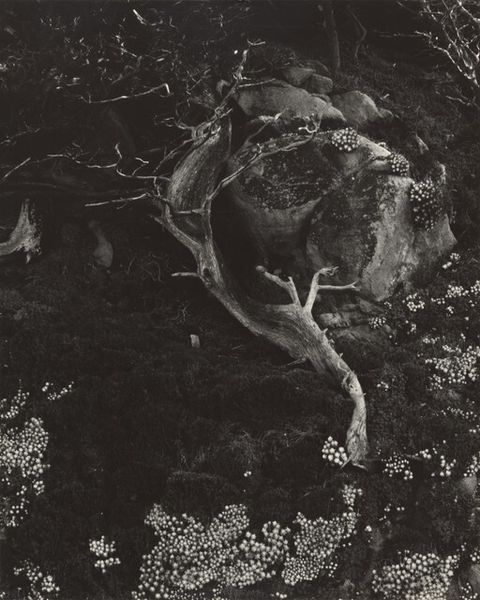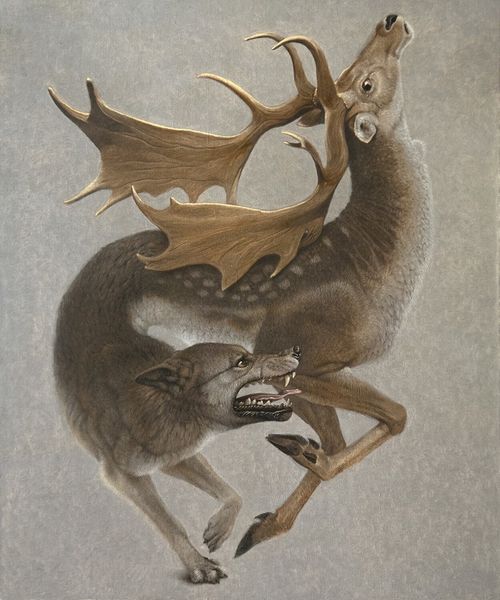![[Stags Heads - Dibedale] by Horatio Ross](/_next/image?url=https%3A%2F%2Fd2w8kbdekdi1gv.cloudfront.net%2FeyJidWNrZXQiOiAiYXJ0ZXJhLWltYWdlcy1idWNrZXQiLCAia2V5IjogImFydHdvcmtzLzk3ZjNkZGYyLTRhNGEtNGJjYy04Mjc4LTMzMzk4MDRiOWQ3Ny85N2YzZGRmMi00YTRhLTRiY2MtODI3OC0zMzM5ODA0YjlkNzdfZnVsbC5qcGciLCAiZWRpdHMiOiB7InJlc2l6ZSI6IHsid2lkdGgiOiAxOTIwLCAiaGVpZ2h0IjogMTkyMCwgImZpdCI6ICJpbnNpZGUifX19&w=3840&q=75)
Dimensions: 16 x 20.4 cm (6 5/16 x 8 1/16 in.)
Copyright: Public Domain
Curator: This striking image before us, titled "Stags Heads - Dibedale," was captured in 1856 by Horatio Ross. It’s a gelatin-silver print, now residing here at the Metropolitan Museum of Art. Quite evocative, wouldn’t you agree? Editor: Haunting, definitely a bit macabre. There's something about the stark arrangement of the skulls and antlers that evokes a sense of inevitable mortality. It is also curious to see them set on a patterned wall. Curator: Indeed. Looking at the making, one must appreciate the technical challenges Ross overcame to create such a clear and detailed photograph in that era. The gelatin-silver process itself, a refinement of earlier photographic techniques, allowed for finer detail and greater tonal range, quite important for creating definition of the textures of the antlers, for instance. Editor: Absolutely. The social context here also speaks volumes. Think about the Victorian era and the popularity of hunting as a marker of class and leisure. This photograph, in a way, memorializes that power dynamic between humans and nature, echoing the Romantic movement's fascination with the sublime and its concurrent exploitation of nature. Curator: Interesting to link the social context to aesthetics! I would also highlight that displaying hunting trophies was a common practice among the landed gentry, signifying prowess and control over the landscape. The photograph, as a reproducible medium, perhaps democratized that ownership, bringing the symbols of power to a wider audience through circulation and consumption of such images. Editor: That’s a fascinating point. The act of photographing and displaying these stags' heads can be interpreted as an act of asserting dominance over nature. The arrangement feels carefully constructed and challenges our view of still-life in photographs. The choice of medium, the photographic print, also becomes crucial to this narrative. It allowed for a wide dissemination, making tangible expressions of human dominion. Curator: Exactly, so it’s also critical to address photography not as purely mimetic but a system in itself. Looking at the materials and processes allows for us to analyze how a work such as this contributes to an ecosystem of display and knowledge. Editor: Right. The power lies not just in what’s depicted but also in how photography participates in a larger theater of power and visual culture, revealing how we are placed within the very material it uses. Thank you! Curator: My pleasure.
Comments
No comments
Be the first to comment and join the conversation on the ultimate creative platform.
